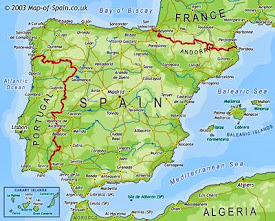Evora is one of Portugal's finest and most delightful towns. It is a true open-air museum with a large number of wonderfully preserved monuments and buildings of public interest that led UNESCO to protect it as a World Heritage Site.
Each age has left its trace on Evora. It was the Celts who named it Ebora and the Romans gave it its most famous landmark, the
Temple of Diana. Dating from the 2nd century, it is one of the Iberian Peninsula's best preserved Roman monuments, raised on a 10ft high stone platform, with 14 of the original 18 granite Corinthian columns still standing. The whitewashed houses, arches, and twisting alleyways that characterize the town reflect the Moorish presence.

Outside the city walls on the road to the train station is
Ermita de São Brás ("Hermitage of St. Blaise"), an extraordinary building that looks like a medieval castle, complete with large battlements, gargoyles, and round buttresses. It was built in 1485 in thanksgiving for survival from the plague.

Around Evora are also numerous prehistoric monuments - dozens of sizeable Neolithic menhirs, cromlechs, and dolmens (the one in Zambujeiro, now a national monument, is the largest in Europe, consisting of seven stones, each 6m/20ft high, forming a huge chamber).
The Cromlech of Almendres dating from somewhere between 4000 and 2000 B.C has been called "the Portuguese Stonehenge." It is the most important megalithic group in the Iberian Peninsula, consisting of a huge oval of almost one hundred rounded granite monoliths, some engraved with symbolic markings, assumed to have been used for cult purposes. They have their origins in a culture that flourished in the Iberian Peninsula before spreading north as far as Brittany and Denmark.
Pictures and information are courtesy of http://www.golisbon.com/
 The hotel's main building houses 135 bedrooms, comprising 4 suites, 63 double rooms, 60 twin rooms and 8 single rooms, all equipped with the most up-to-date technology in terms of comfort. The palace has 12 rooms, all of which are decorated in the style of the era to create a romantic ambience.
The hotel's main building houses 135 bedrooms, comprising 4 suites, 63 double rooms, 60 twin rooms and 8 single rooms, all equipped with the most up-to-date technology in terms of comfort. The palace has 12 rooms, all of which are decorated in the style of the era to create a romantic ambience.































.jpg)







